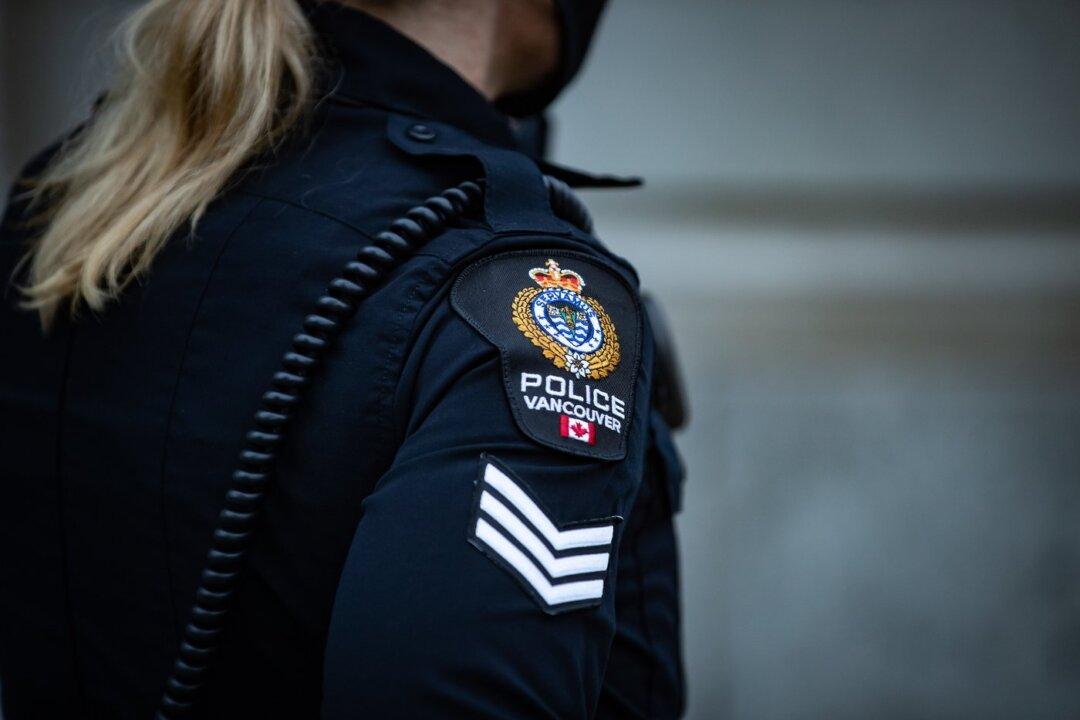Following an official review prompted by a complaint, the Vancouver Police Board (VPB) has determined that the “thin blue line” patch cannot be worn by uniformed, on-duty Vancouver police officers, after hearing that some members of the public associate the symbol with “racism” and “colonialism.”
The review followed a Dec.1, 2021, complaint from a member of the public who saw a Vancouver police officer wearing the item and “perceived [it] to be an offensive patch,” said a Vancouver Police Department (VPD) report dated Jan. 2.





